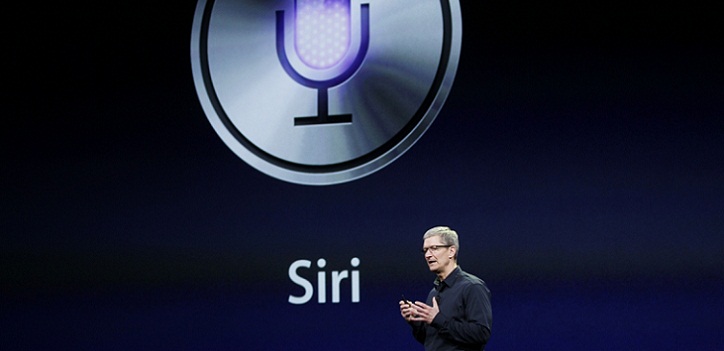I personally never counted myself as a content creator but apparently, I always have been counted as one. Why you may ask? The answer is easy. I have a habit of filming my work, writing blog posts (mostly in Persian), posting my work and code on twitter and stuff. All of these are behaviors from a content creator.
My content on the other hand were mostly about me, I never cared about making those type of advertisement reports (where you have to care a lot about SEO, back-links and stuff) because it wasn’t my job to create the content. Now, I am thinking about it, but my own way.
The history of content creation
Before going deep about this, let’s clear something. This part of the article is from my own point of view and it’s not a certain history, but at least, this is how I saw content creation and how it works.
One-way content generation
Let’s go back a lot. I mean A LOT! Maybe in 2006, you opened a URL in your Internet Explorer and then find out a very ugly static website written in pure HTML. Some of those websites also had some annoying JS functions (we should be grateful about the modern use of JS, there are no mouse pointer following figures or rain in background anymore!).
This is an example of a one way form of content. The content you can not react to as is. You had to find an email address in Contact Us page, or fill their forms and usually they did not ever viewed the respective inbox. So you couldn’t help them improve their content or right their wrongs.
Here comes the blog
I almost was 12 when I discovered the concept of blogs, and I also started writing in a free blogging service (which is very popular among Iranian community and you can find it here) and it was amazing.
The whole greatness of blogging was that it wasn’t “one-way” and people could interact with each other using comments and at the same time, chatrooms were also pretty popular. So we usually had a good time with our internet pals those days. And you know what does that mean?
User generated content (UGC) matters!
It really does. Imagine you want to get a new hair dryer. So what do you do? I guess you go to amazon and search for hair dryers. A hair dryer is not an object you buy once a week, so you need to know that the hair dryer in question lasts enough or not, how much power does it take and does it meet health guidelines and regulations for a product like that?
You just read the description, specifications and other details provided by the seller on Amazon. It’s good, but not great. You have an idea about the product, but you don’t know how is its user experience. What can we do about this? Easy, we scroll down to the user reviews. Were people rated and described their feelings about the product.
In the reviews section, you find out this product doesn’t last that much, you even may search in other platforms about the very same product and find out what is wrong with the product in question. For me, the second platform is always YouTube. People do a lot of good product reviews on YouTube (even those who got sponsored by the brand we’re looking for, are usually helpful as well!) and guess what? YouTube is also a platform for UGC!
But what, it doesn’t end here. You read this post but you still are confused about the title. I have to say this is where the actual fun begins!

The future of content is AI!
Now this is the part you were waiting for, in this section, I’m going to talk about how AI can help us create better content because recently, I follow the trend of AI art a lot! I also coded and developed some AI Art tools myself! I also was too cheap to get copilot paid membership, and created my own version. See? I officially joined the army of content creators, but in my very own way.
Sentiment Analysis
I guess this one is not really about content creation but more about content moderation. But moderation is as important as creation (if not more) and I had to put it here. Having a sentiment analysis system on our user generated content, can help us find if the product has poor quality or how toxic our community is or something like this.
To be honest it helps us more than it seems. It helps us make a better community (pretty much by banning suspicious users) and also give feedback to our suppliers who sent us products with poor quality. It doesn’t end here by the way, my example is still about a retail store and not a general website.
In the modern day, you have to watch your tongue more than before. A lot of people stood for their rights and the typical words of your daily speech can be offensive to other people. So in this particular case I believe these analytic tools can help us improve even in our personal lives by having a better community.
We talked enough about content moderation using AI, let’s go to the fun and interesting topic of content generation!
The rise of AI art generators
AI art is basically an empire now. AI art generators such as Dall-E 2 and Midjourney (you probably would like to take a look at my open source version of midjourney, OpenJourney, just saying) are very popular and in the other hand, Stable Diffusion (and forks) are really growing in the open source side as well.
You cannot deny the fact that these are pretty cool tools of content creation. These tools can help us bring our ideas to life in forms of art, 3D design, interior design, UI/UX and a lot more. So we have to talk about these, we have to recognize these images as the new content people create and enjoy!
It does not end here as well. There is also a new trend of Text To Music which means a lot of music creators (me included!) may use AI to create music as well. This is the beauty of AI content creation.
And finally, everyone offers AI these days.
Yes, every company which had an even small relation to content creation, offers AI! We expect big names of our industry such as Google or Meta provide tons of AI tools such as libraries, frameworks, models, datasets and even programming languages. But do you know what amazed me recently?
Notion also provides AI solutions for productivity and ideas! You basically can have some sort of copilot for your content calendar or even better (in case of some people worse) an ai companion for task management and I think this is great.
Now we have tools to create text, images, videos and sounds, what should be our next step? I guess we have to read minds (and I’ll write an article about that as soon as possible).
Conclusion
Now let’s conclude (I know, I have this section on every blog post and I don’t put anything useful here). We just found out where we have started the age of digital content creation. Internet had a great role in revolutionizing this age and opened new doors of opportunity for us, people who usually couldn’t get the chance of writing in a magazine or newspaper easily. These days we write on Twitter (at least until we can write without paying Elon Musk for that!) and it needs no privilege. It only requires an internet connection.
So AI can help us improve our content, it can help us write better reviews, it can help us turn a bunch of photographs into a full report. You just input your photos, the image-to-text pipeline starts and extract details of each photo, then you edit them and now you have your reports.
In my opinion, AI is there to help us make the world a better place. Because it provides us an equal chance of being author, artist, musician and anything which required some level of privilege in the past.







